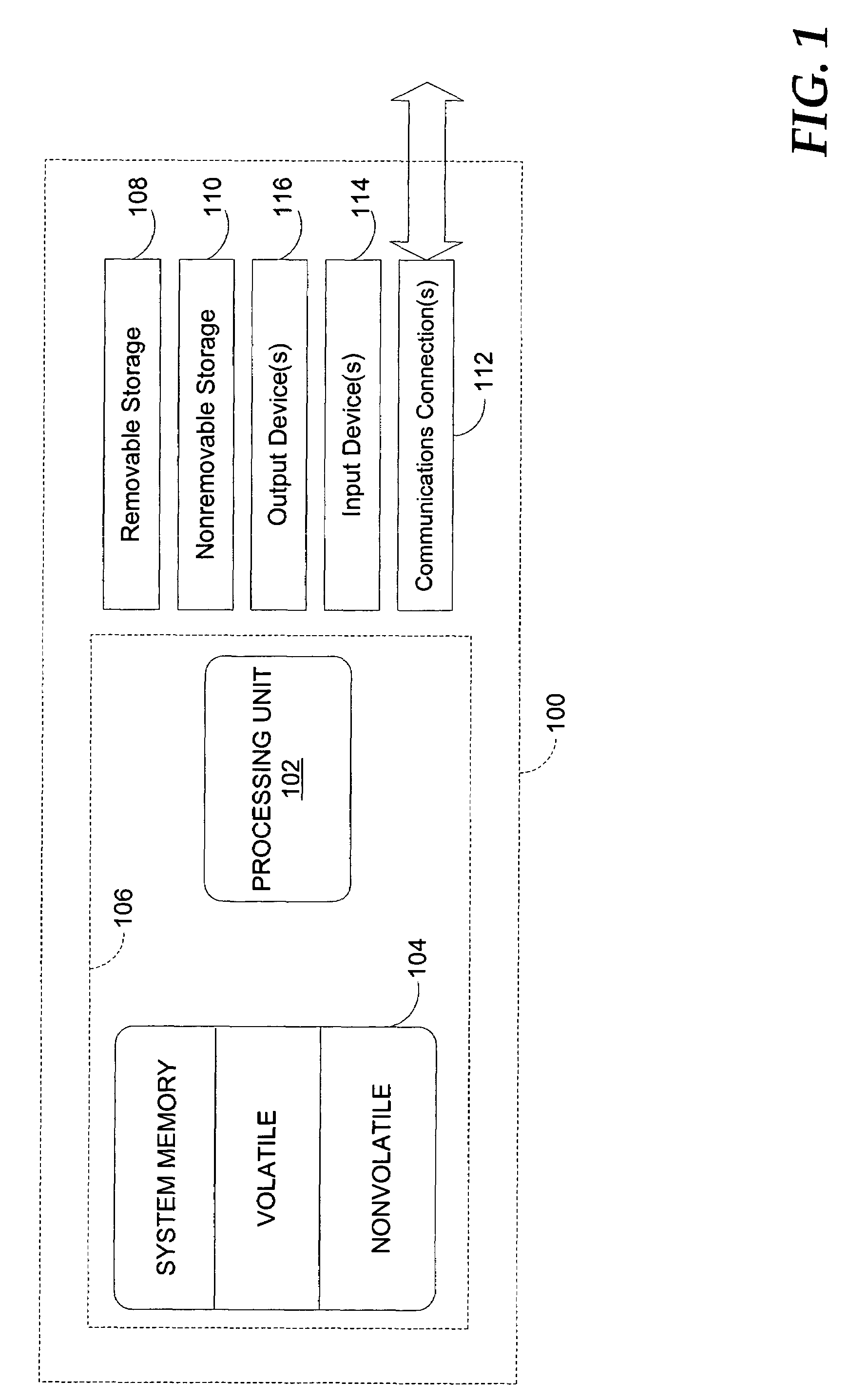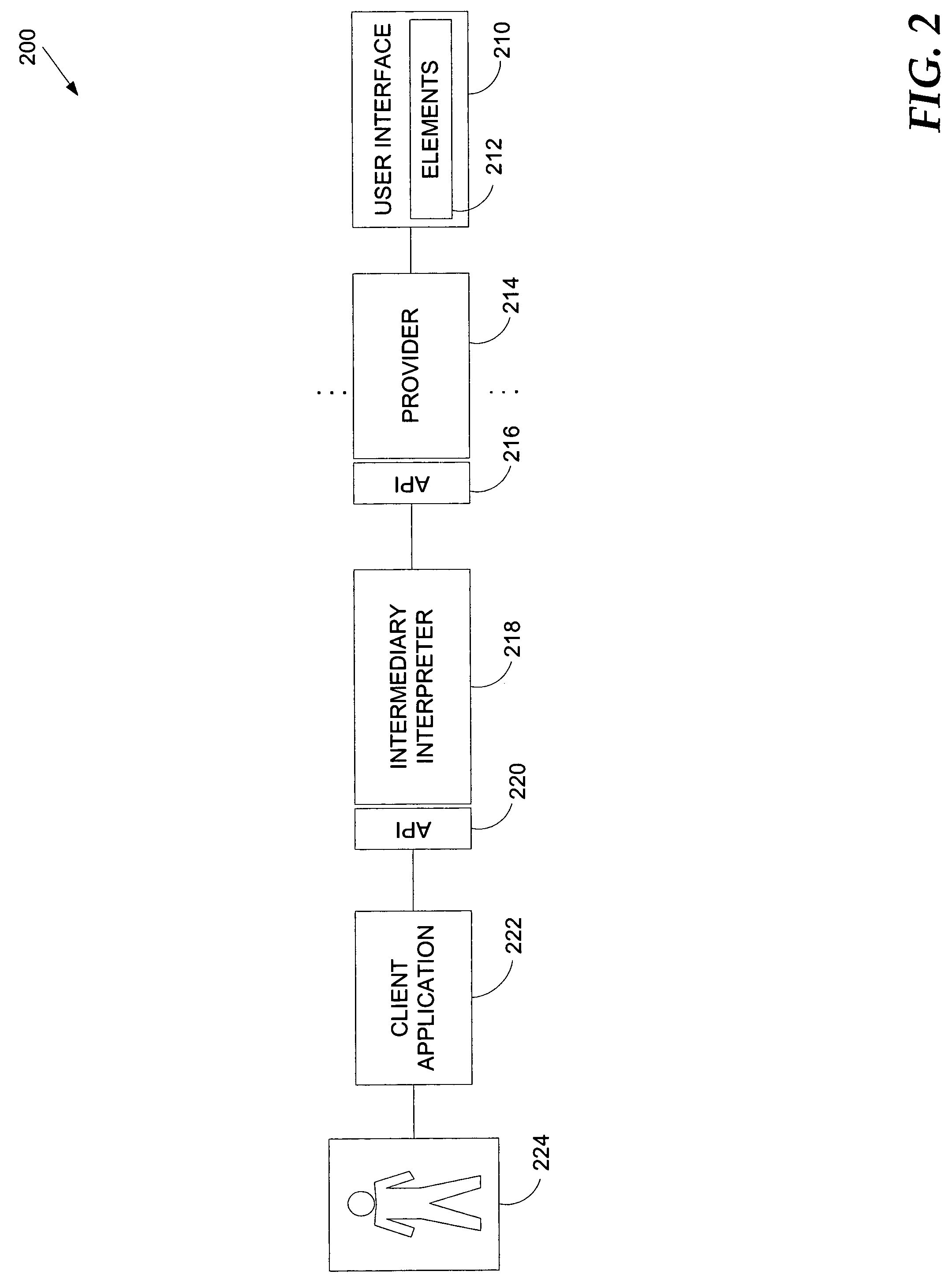Method and system for representing hierarchal structures of a user-interface
a hierarchical structure and user interface technology, applied in the field of methods and systems, can solve the problems of not knowing where the values are stored, the person cannot know about every type of vcr, and the assistive-technology application must function with limited knowledge of the application's user interface, so as to facilitate automatic testing, reduce the amount of resources, and enhance the computing experience of people.
- Summary
- Abstract
- Description
- Claims
- Application Information
AI Technical Summary
Benefits of technology
Problems solved by technology
Method used
Image
Examples
Embodiment Construction
[0030]The present invention provides a novel method and apparatus for describing a user interface and / or elements of a user interface in greater detail so that the elements can be manipulated or otherwise used by a client application. The present invention will be better understood from the detailed description provided below and from the accompanying drawings of various embodiments of the invention. The detailed description and drawings, however, should not be read to limit the invention to the specific embodiments. Rather, these specifics are provided for explanatory purposes that help the invention to be better understood.
[0031]Specific hardware devices, programming languages, components, processes, and numerous details including operating environments and the like are set forth to provide a thorough understanding of the present invention. In other instances, structures, devices, and processes are shown in block diagram form, rather than in detail, to avoid obscuring the present ...
PUM
 Login to View More
Login to View More Abstract
Description
Claims
Application Information
 Login to View More
Login to View More - R&D
- Intellectual Property
- Life Sciences
- Materials
- Tech Scout
- Unparalleled Data Quality
- Higher Quality Content
- 60% Fewer Hallucinations
Browse by: Latest US Patents, China's latest patents, Technical Efficacy Thesaurus, Application Domain, Technology Topic, Popular Technical Reports.
© 2025 PatSnap. All rights reserved.Legal|Privacy policy|Modern Slavery Act Transparency Statement|Sitemap|About US| Contact US: help@patsnap.com



